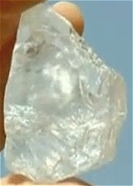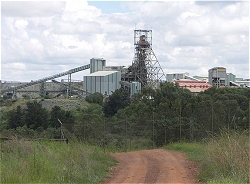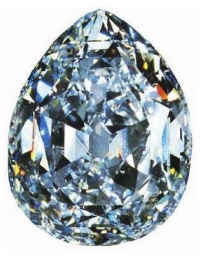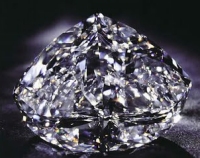
October Editorial
The Cullinan diamonds fact file

October Editorial
The Cullinan diamonds fact file
|

The Cullinan mine, previously known as the Premier mine, is famous for producing world-class diamonds. The diamonds come from the Cullinan kimberlite pipe, which is a diamond-bearing resource valued at around 204 million carats. It is also the world's only significant source of the rare and highly valuable blue diamond type.The mine is owned by the The Petra Diamonds Cullinan Consortium (PDCC) and is in the Gauteng Province of South Africa, 30 km east of the city of Pretoria.
|
The most coveted of the diamonds recovered from the mine is the Cullinan diamond. This was found in 1905 and is still the largest gem diamond ever found. The rough stone was a massive 3,106 carats. This produced two cut diamonds, the Star of Africa (also known as Cullinan I) and the Cullinan II or the Lesser Star of Africa. The pair are the second and the fourth largest polished diamonds in the world. | |

Both of these Cullinan diamonds are part the Crown Jewels of Great Britain. The Star of Africa is now mounted in the head of the Sceptre with the Cross. The Sceptre with the Cross is also known as the St Edward's Sceptre, the Sovereign's Sceptre or the Royal Sceptre. It was originally made for the coronation of King Charles II in 1661. Both gems are on the display at the Jewel House in the Tower of London. The Star of Africa (still huge at 530.2 carats) was the world's largest diamond up to 1985 when a large brown diamond of 755.5 carats (151 g) was discovered - also in the Cullinan mine. This diamond was later cut to 545.67 carats (109.13 g - the world's largest cut diamond). Until 1997 it was simply known as 'the brown diamond', but in 1997 it was presented to the King of Thailand for his Golden Jubilee - the 50th anniversary of his coronation - and it was named the Golden Jubilee diamond. On the 24th of September 2009 Petra Diamonds Ltd. announced the recovery of another top class diamond from their mine. Johan Dippenaar, the company's chief executive, said that the diamond is 507.55-carats (over 100 grams) and is of "exceptional colour and clarity". Although the diamond still has to undergo numerous tests, it is believed that, when cut, the gem will be in the top twenty diamonds in the world. You can see more images of it here. The company predicts that because of its transparency and clarity, the diamond will be a Type II. Diamonds fall into two broad groups which gemmologists call 'Type I' and 'Type II'. In Type I diamonds some of the carbon atoms are replaced by nitrogen. Approximately 99% of natural diamonds contain this sub-microscopic nitrogen as an impurity within the carbon pattern. Diamonds which do not contain readily-detectable nitrogen as an impurity are named 'Type II' and are more highly valued. Type II diamonds are further subdivided into Type IIa - often absolutely colourless gems of extreme transparency. (A good example of a Type IIa diamond is none other than the original Cullinan diamond.) Type IIb diamonds - of which the Cullinan mine is the major source - contain boron impurities. These impurities cause Type IIb diamonds to conduct electricity and explains why they are often blue in colour. 
Other famous Cullinan diamonds are the The Centenary and the Taylor-Burton diamond. The Centenary Diamond (273.85 carats) is rated by colour as grade D by the Gemological Institute of America.This is the highest grade of colorless diamond and means that it is internally and externally flawless. The diamond was recovered in 1986 as a rough stone of 599 carats. Once cut, the Centenary had 247 facets - 164 on the stone and 83 around its girdle. Never before had such a high number of facets been polished onto a diamond. The Centenary was completed in February 1991. Though the true value of the Centenary diamond is unknown, it was insured for around $100 million. The stone was loaned to the Tower of London, where it was displayed for several years. The current owner of Centenary is unknown. The Taylor-Burton became famous when when it was purchased by actor Richard Burton for his wife Elizabeth Taylor to celebrate her 40th birthday in 1972. The size and value of the diamond ensured worldwide publicity for the gift. When found in the Cullinan mine in 1966, it weighed 241 carats. It was cut into the shape of a pear weighing 69.42 carats (13.88 g). After her divorce, Elizabeth Taylor auctioned the diamond for $5,000,000 and used the money to build a hospital in Botswana. | |
| _______________________________ | ||||
| Home | | | Shopping | | | Database |
© Biscuit Software 2004-2015
All rights reserved